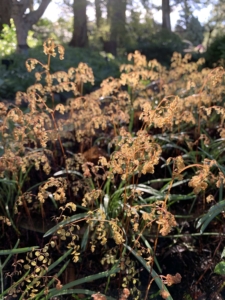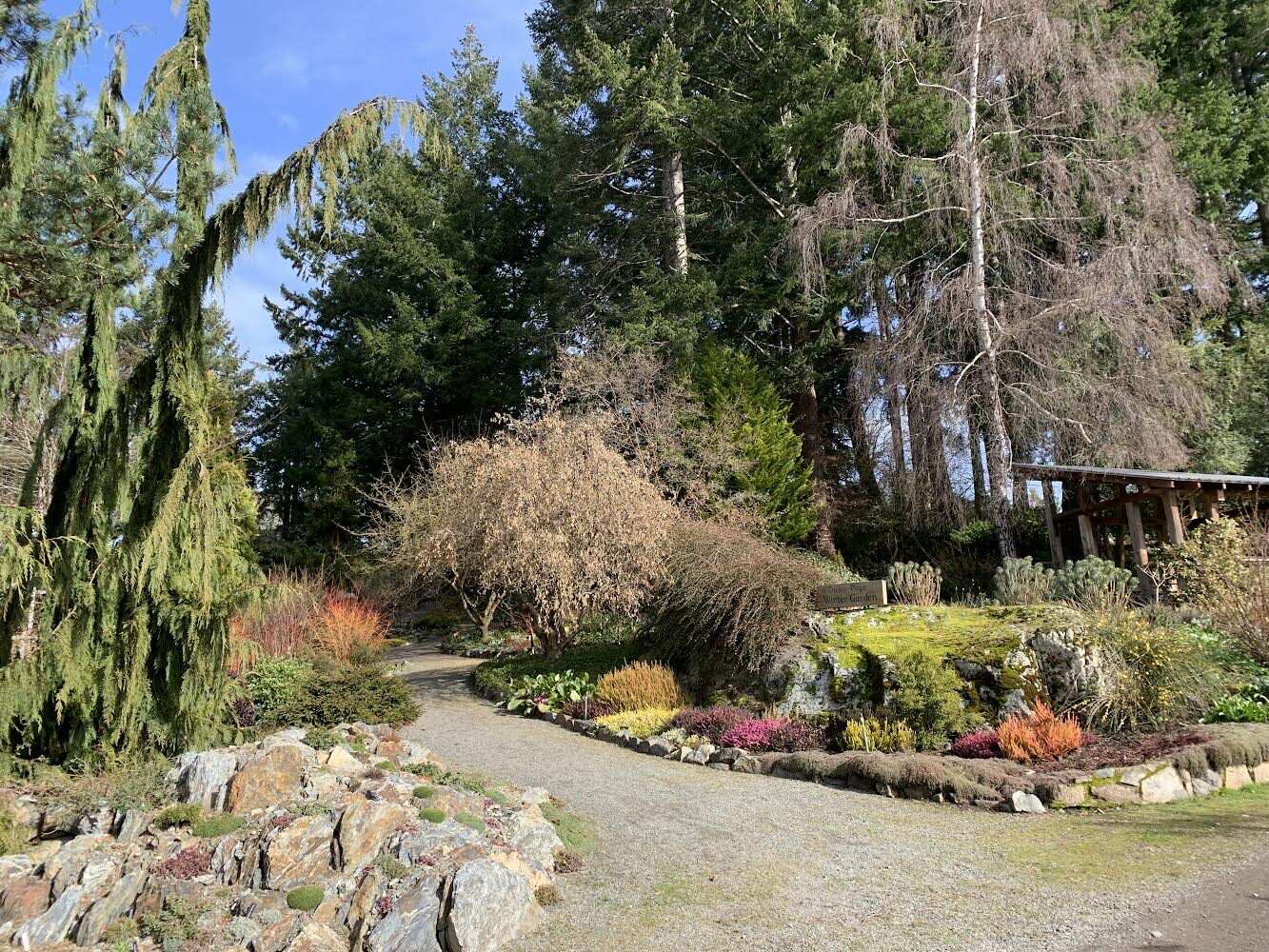Ode to Volunteering & The Doris Page Winter Garden
The reason I wanted to volunteer at HCP, and I'm sure why many of you are members, is that so much of enjoying a garden comes from building a relationship with it that spans seasons and years. It's a treat to tour a famous garden once or twice, but there is ample pleasure to be had in enjoying a favourite tree or anticipating an annual spectacle. Ideally, you don't settle on just one, you have a succession of them that take you through the whole year, and through repeated visits to check up on your favourites your affection grows.
Affection is essential to appreciating a garden like the Doris Page Winter Garden. You will never see a perfect Butchart-esque bulb display, or topiary pruning. Currently there is a family of voles tunnelling its way through our front bed and a rabbit, or, god forbid, a deer, repeatedly insists on shredding the bergenias and green-stemmed dogwood. But never mind, direct your attention to  the sweet pink bracts of the red huckleberry (Vaccinium parvifolium),
the sweet pink bracts of the red huckleberry (Vaccinium parvifolium),
or the delicate orange colouring of unfurling maidenhair ferns (Adiantum venustum). Gently pet the emerging prairie crocus (Pulsatilla vulgaris), downy soft and undeterred by cool nights. The Corylopsis spicata buds are elongating, soon they will drip with butter-yellow bells. The first time I saw a corylopsis, overhanging a path at the Brooklyn Botanic Garden, I swore I would have one in my own garden. Instead, I get the pleasure of tending some fully grown ones each week in the DPWG.

Another shrub I have adopted is the Chimonanthus praecox. You've probably passed it many times and never noticed it. That's fair, as there's not a day of the year one could call it beautiful, but I love to watch the little yellow buds swell through December, and when they begin to flower in January or February, I make all the other volunteers come smell them, even if it's cold out and the scent is barely detectable. It’s an event when the chimonanthus flowers! And I look forward to enjoying its spicy perfume each week until sometime in mid-to-late March when the last translucent flower shrivels and drops off.
When the sun is out, the bumble bees fly between the neighbouring Heather Garden and our hellebores. Under their flight path, the green tips of thousands of scilla are poking up out of the soil. I expect if the weather holds, the first will flower by the second week of March, and the stragglers will be fading as April arrives. But what a pleasure, to have a carpet of true blue, even if it is temporary. It makes you appreciate it all the more when it happens. Like the camassia meadows, the pure spectacle of just a few weeks looms in our memory, marks time in the gardening calendar, defines our whole understanding of our environment
I'm genuinely sad to miss even a week of volunteering in January, February and March, as the garden progresses so rapidly, and there are so many minor events that could be celebrated. Just this week the first daphne flowers opened! What richness!


